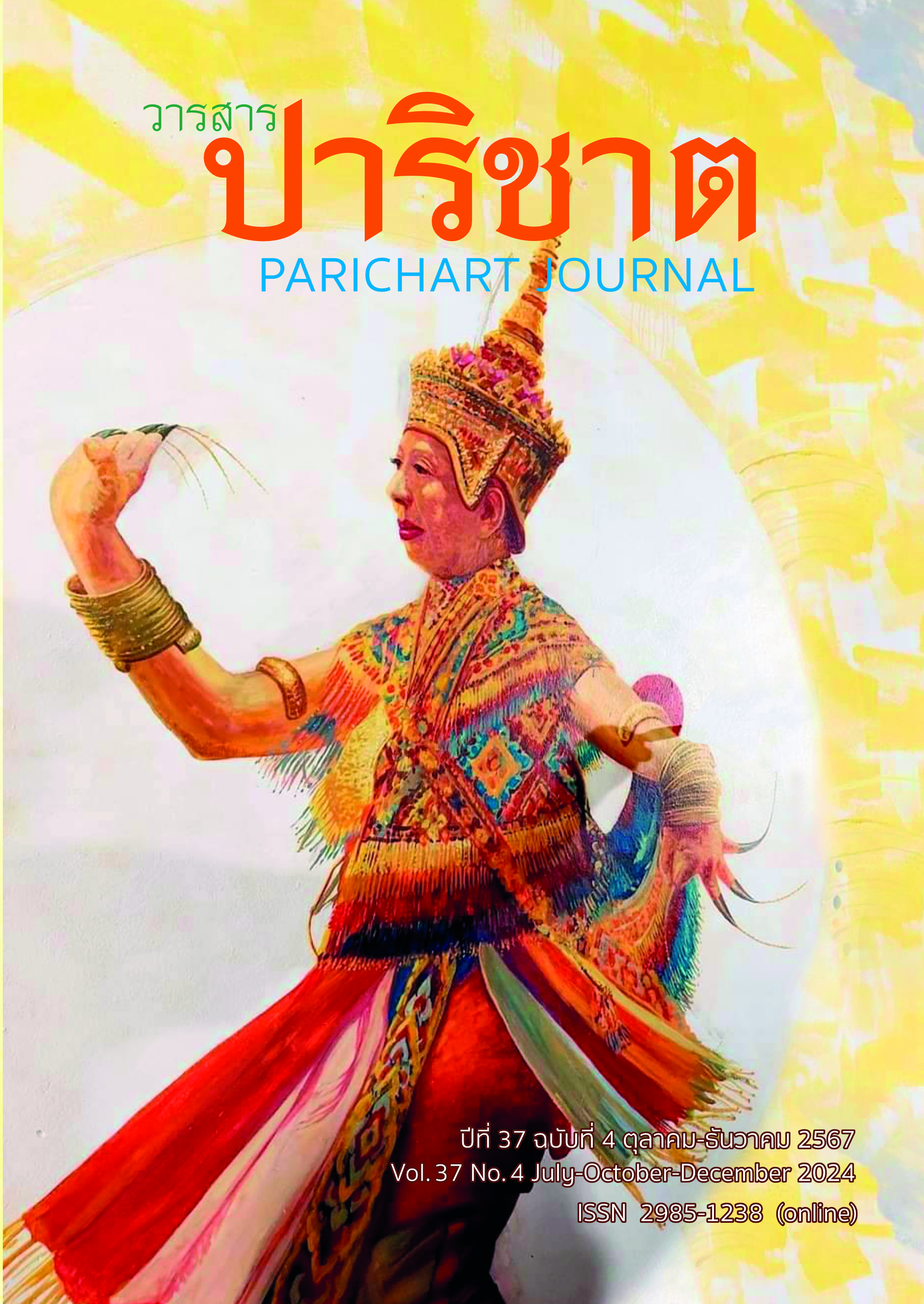An Analysis of Figurative Language and Values in American Culture in Taylor Swift’s Song Lyrics
Main Article Content
Abstract
In America, the music and songs are favored diversely which can reflect American’s ethnicity and diversity. This study aimed to 1) explore values in American culture in Taylor Swift’s 20 songs based on actual performance on the weekly Billboard Hot 100 in January 2023 by applying Kohls’ (1984) framework and 2) investigate linguistic aspects in the songs by using Reaske’s (1966) framework to find out figurative language types used. The results can be summarized as follows: the most frequently used types of figurative language are symbol (26.79%) frequently used in Bad Blood and Tim McGraw and paradox (14.34%) used mostly in Blank Space and Red. The most frequently found values in American culture are directness/openness/honesty (26.46%) found mostly in Blank Space, I Knew You Were Trouble and Bad Blood, individualism/privacy (11.38%) (Wildest Dreams, Shake it Off, etc.) and future orientation (11.08%) (You Belong With Me, Style, etc.). To summarize the figurative language aspect, the present study found a greater number of figurative language types used in Taylor Swift’s songs once compared with the previous studies: the present studies found 15 types. In terms of American culture, the present study also found other different American values in more extensive views: future orientation, practicality/efficiency, competition, time and its control, self-help and informality. The results of this present study could be used as a guideline for writers, authors, composers or artists to create their art works as well as teaching materials in English creative writing course and courses related to American culture.
Article Details

This work is licensed under a Creative Commons Attribution-NonCommercial-NoDerivatives 4.0 International License.
References
Holloway, D., & Cheney, B. (2001). American history in songs: Lyrics from 1900 to 1945. Universe Lincoln.
Meyer. (1997). What is literature? A definition based on prototype. University of Dakota.
Shodio, I.M. (2020). Type and meaning of figurative language of most popular football anthem song from English premier league club. http://eprints.ums.ac.id/82356/12/Naskah%20Publikasi%20rev.pdf
Puspitorini, F., & Hamdani, H. (2021). An analysis of figurative language on the lyrics of Coldplay's selected song. International Journal of English and Applied Linguistics, 1(3), 231-244. doi:10.47709/ijeal.v1i3.1126
Reaske, C.R. (1966). How to analyze poetry. Monarch Press.
Frith, S., Street, J., & Straw, W. (2001). The Cambridge companion to pop and rock. Cambridge University Press.
Hirschberg, L. (2019). Little Miss Sunshine. https://www.nytimes.com/2009/12/06/t-magazine/womens-fashion/06well-swift.html
Suriyawongpaisal, W. (2013). A study of figurative language that conveys connotation related to American cultural values in pop songs: The case of Taylor Swift. Humanities Journal, 20(1), 241-261.
Lusiana, P.N., Aryawibawa, N., & Qomariana, Y. (2017). Figurative language used in Taylor Swift’s songs in the Album 1989. Jurnal Humanis, Fakultas Ilmu Budaya Unud, 21(1), 166-171.
Ford, C. (2020). 10 ways music is intrinsically linked to our cultural identity. https://www.contiki.com/six-two/10-waysmusic-helps-cultural-identity/
Kohls, L.R. (1984). The values Americans live by. Meridian House International.
Creswell, J.W. & Miller, D.L. (2000). Determining validity in qualitative Inquiry. Theory into Practice, 39(3), 124-130. doi:10.1207/s15430421tip3903_2


